Argyle Diamond Mine, Western Australia
Western Australia has many great stories for small group educational tours to share and learn for senior couples and mature single travellers. The Argyle Diamond story in the Kimberley is one of many from pastoralists, to Kununurra, Wyndham and Purnululu or Halls Creek and the deep Aboriginal history to learn from.
16 Sep 21 · 14 mins read
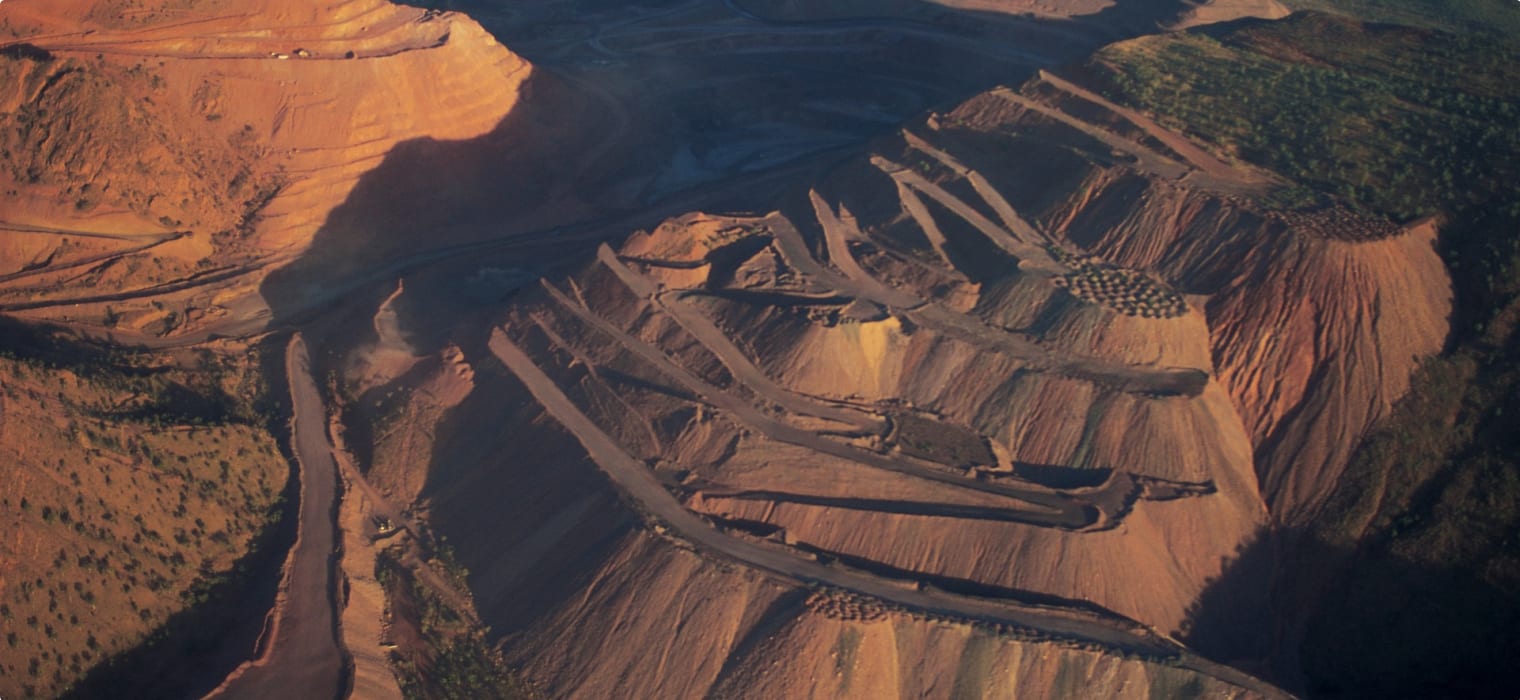
Argyle Diamond Mine
Amongst a wealth of natural wonders in the Kimberley region of Western Australia sits one of the state’s most unique tourist attractions – the Argyle Diamond Mine – until recently the world’s largest single producer of natural-coloured diamonds. Famous for producing the rare and highly desired pink diamond, at one point the mine accounted for 90% of the world’s supply. These elegant signature stones vary in colour from pale pink to intense purple reds and fetch prices up to twenty times that of a white diamond. Natural white, champagne, cognac, blue, and violet diamonds were also produced at the mine.
The site lies on the traditional country of the Miriuwung, Gidja, Malngin and Wularr people in the far northeast of Western Australia, approximately 120 km by road southwest of the nearest town, Kununurra, and 2,200km northeast of Perth. It is notable for being the first successful commercial diamond mine exploiting a volcanic pipe (named AK1). The 1600-metre-long pipe was discovered in 1979, with the mine going into open-cut operation seven years later in 1986.
Averaging annual productions of 8 million carats, the mine saw its peak production in 1994 with 42 million carats. Going on to produce more than 865 million carats in total, the mine’s operations finally ceased in 2020, initiating a detailed and lengthy closure process.
Odyssey Traveller enjoys aerial views of the Argyle Diamond Mine as part of our Kimberley, Purnululu, Tiwi Islands and Arnhem Land small group tour. This 18-day tour is designed for senior and mature travellers who would like to learn about the history and culture of outback Northern Territory and Western Australia with like-minded people, using the knowledge and expertise of our tour leader and local guides. This article explores a detailed history of the Argyle Diamond Mine’s discovery and development to assist your tour. Much of the information is sourced from Stuart Kells’s book Argyle: The Impossible Story of Australian Diamonds.
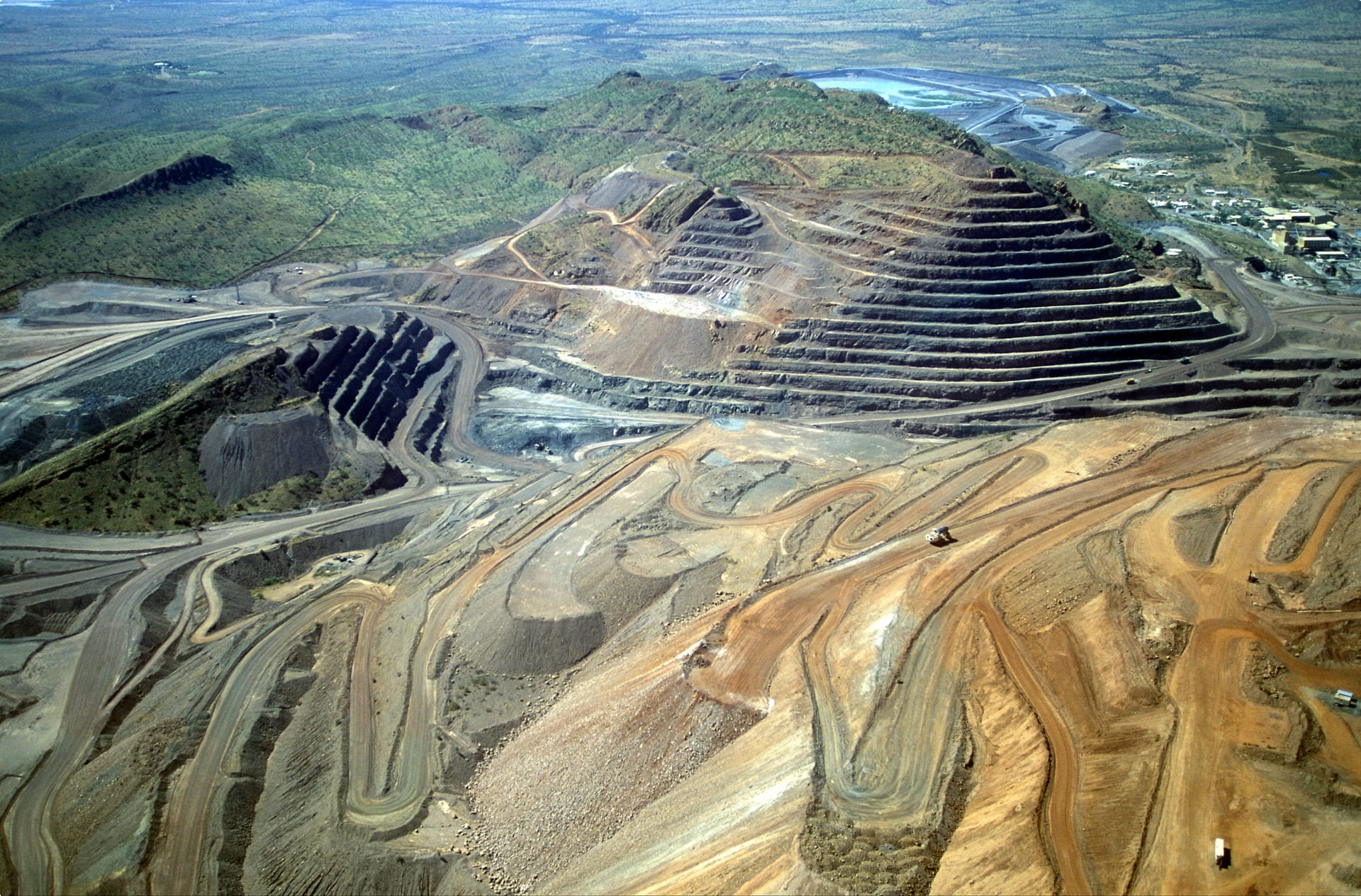
Searching for Diamonds
It has been known since the Gold Rushes of the late nineteenth century that small quantities of alluvially deposited diamonds existed in Australia. Alluvially deposited diamonds are those that have been removed from their original location over millions of years due to weather, erosion, and water movement. They have then been transported over time by gravity and water and deposited in a new setting – often creeks and rivers.
Prospectors first found diamonds by accident in stream gravels at Nullagine, Western Australia, in 1895. Over the next 70 years, thousands of diamonds were then recovered from other alluvial deposits in various parts of the country. However, by the late 1960s, no original source deposit of these diamonds had been discovered.
After the discovery of several alluvial diamonds in the West Kimberley region along the Lennard River (Ellendale area) in 1969, it was decided that a systematic exploration of Western Australia for the source of these diamonds was needed. This was begun by a consortium of mining companies known as the Kalumburu Joint Venture (JV) (later to become the Ashton Joint Venture). Their objective was to discover an economically viable diamond deposit, suitable to mechanised, large-scale, low-cost, open-pit mining.
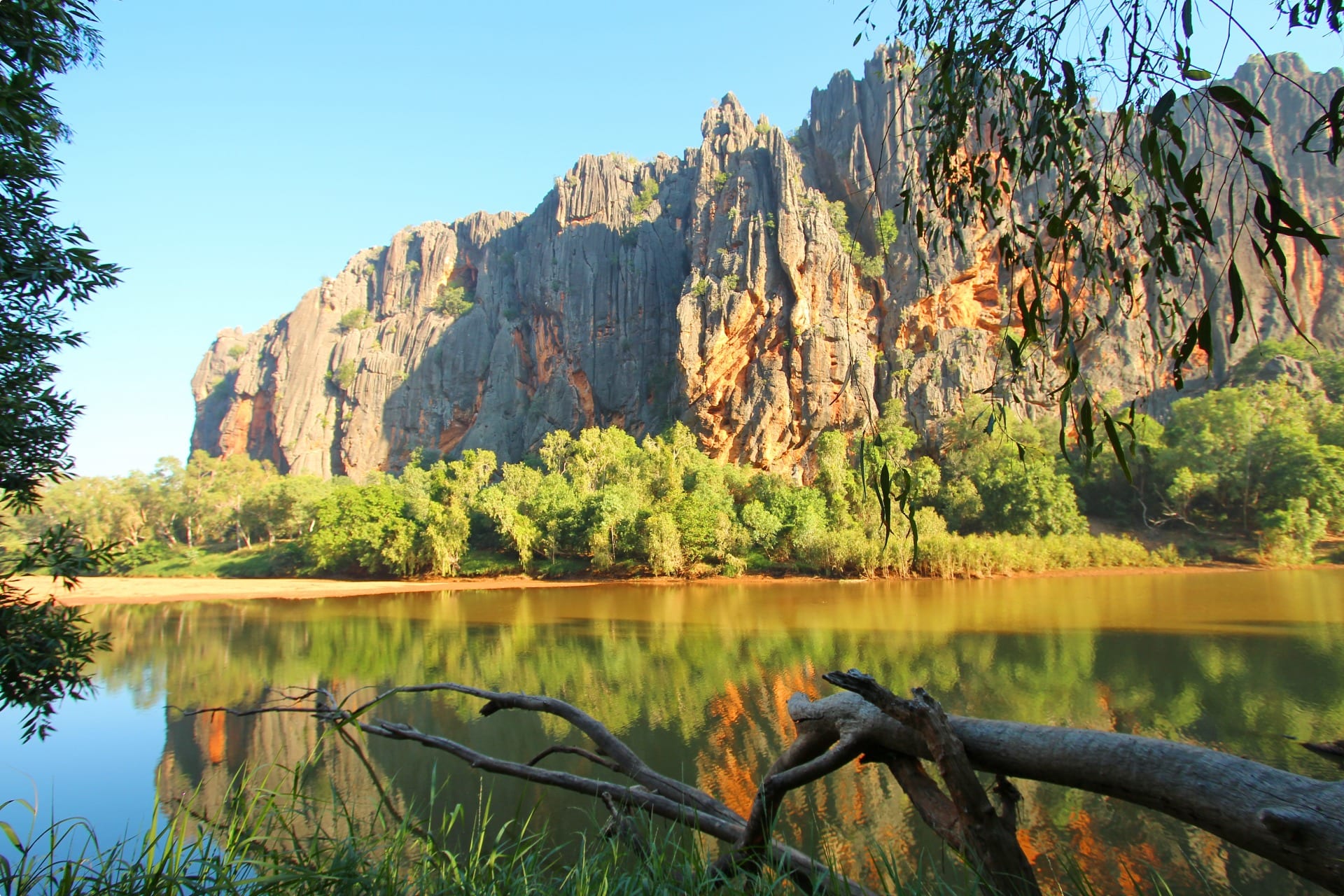
In 1972, The JV’s team of geologists set out using helicopters to collect 1600 eight-kilogram samples from creek sites spread across 190,000 square kilometres of north-western Australia. It was hoped that in at least one of the sample bags, there would be indicators of diamonds. Such a find would be an important encouragement, a first step towards showing that the region had diamond-bearing kimberlites.
The helicopter sampling, including set-up and downtime, took up all of the 1972 field season. This was a major logistical exercise involving remote base camps, fuel dumps, and landing sites. Some large sections stretched 200km without any access for fuel dumps, requiring fuel drums to be airlifted along by helicopters.
From the chopper, the pilots, geologists, and fieldies selected promising sites. Many of these were hard to reach, with rugged terrain preventing landings. Much walking and even cliff climbing was still required to get to them and then back again to the chopper carrying heavy samples.
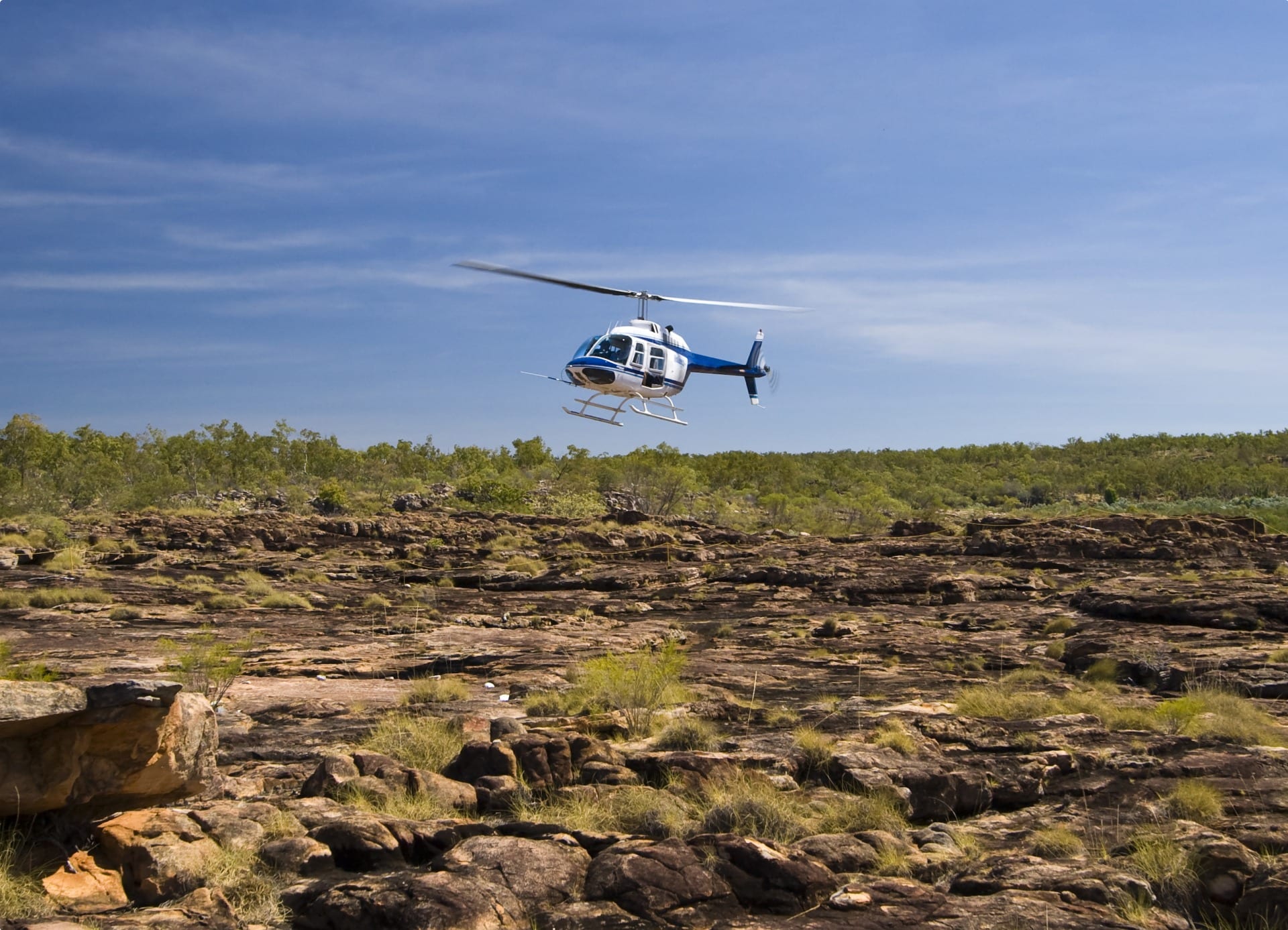
One major factor complicated the fieldwork program: the entire search, and indeed every other aspect of the whole enterprise, had to be conducted in secret. If people outside the JV were to learn what they were up to, in one way or another they were bound to try to cash in. They could attempt their own exploration or, even worse, they might try to claim a discovered promising site for themselves.
Tight security was therefore essential, and it was a condition of the JV agreement that partners keep the search for diamonds secret. The agreement and other corporate documents gave no indication that the JV was interested in mineral title or looking for diamonds. And in correspondence, the word ‘diamond was replaced with the code word ‘baryte’. (Baryte a low-value mineral used in drilling mud, mainly in the oil industry.)
Once the Kimberley gravel samples had been collected, they were meticulously screened and separated to then be carefully scrutinised for diamonds. This involved peering down binocular microscopes and turning over every visible mineral grain for indicator minerals such as pyrope, chrome diopside, zircon, and picromerite.
The entire process was onerous and, as can be imagined, the sample results were slow to come through. Then, finally in April 1973, the first indicator mineral was found. This was followed by even better news in August that year. In sample M109, taken from a remote creek subsequently named ‘Pteropus Creek’, a tiny diamond just 0.008 of a carat or about 1mm long was discovered. Resampling at the site then certified the presence of indicator minerals, suggesting the diamond had come from a kimberlite pipe nearby.
Discoveries at Ellendale
The discovery at Pteropus Creek was a critical achievement: for the first time, the JV had shown that diamond bearing volcanic pipes existed in the Kimberley. The venture had been given a fresh push of encouragement in their search for diamonds.
The search was still a slow and onerous one, but they were now confident and determined to find a a diamond source. Then, finally in February 1976, at a location just upstream from where sample M109 had been gathered, they discovered the first volcanic pipe. This was soon followed in May by a discovery of 6 volcanic pipes near the Big Springs bore in the south-west. The pipe that came to be known as Big Spring No. 1 was shown to contain diamonds.
And the momentous year was still yet to be over. In November, a further discovery was made at Mount North Creek, near Mount Percy on the Lennard River sheet in the West Kimberley. A diamond was found on a strange looking depression that was several hundred metres wide, and in which indicator minerals were so plentiful that they could be seen with the naked eye. The strange depression, named Ellendale A (and subsequently Ellendale 4) was a volcanic pipe.
Ellendale 4 proved the most promising of the discoveries that year. It was enormous – the third largest known pipe anywhere in the world at that time, measuring around 76 hectares in area. In addition, across the entire Ellendale field, more than forty lamproite pipes were identified, several of them measuring in the tens of hectares.
By 1978 the most significant Ellendale pipes had been sample drilled and it soon became apparent that several of the pipes were significantly diamondiferous. From 230,00 tonnes of lamproite, some 92,000 diamonds were unearthed. Pipes 4 and 9 particularly yielded lustrous, well-shaped stones of good size. Ashton Mining Limited was formed as a result and excitement reached a fever pitch on the stock market.
The heightened expectations, however, would soon be dampened. From further bulk sampling of ore, it became clear that no other of the more than 40 pipes was a significant source of diamonds. And although the diamonds in Ellendale 4 and 9 were handsome, the yield per tonne of rock wasn’t. By the middle of 1979, it was clear that there was insufficient value in a tonne of rock to justify the cost of recovering the precious gems. Despite the early optimism, mining at Ellendale would not be economic.
Discovery of the Argyle Pipe
Despite the disappointment of Ellendale, the Ashton JV pushed on, turning their attention to the other side of the Kimberley, east of what is now the Great Northern Highway. Kimberlite dykes had been discovered in the East Kimberley in 1977, but the JV hadn’t gathered samples from there, as it was harder to do so. Now, using helicopters to get into the valleys, they went about sampling some of the watercourses in the East Kimberley between Halls Creek and Kununurra.

In one of the samples collected by the geologist Maureen Muggeridge at Smoke Creek (a waterway that drains into Lake Argyle), several large diamonds were discovered. Upon the news, members of the JV quickly flocked to the creek for further inspection. Here they discovered concentrations of alluvial diamonds rarely found elsewhere on the planet: up to 15 carats per cubic metre.
Then on 2 October 1979, after methodically tracing the diamonds along the watercourse, the team discovered a large, high-grade lamproite pipe full of diamonds. They named it ‘AK1’ – ‘Australian Kimberline 1’ – soon referred to as ‘Argyle’ due to its location halfway between Lake Argyle and the Bungle Bungles.
There were positive signs that the Argyle pipe would be significantly diamondiferous, and it was in a perfect location: well-drained by Smoke Creek in the north and Limestone Creek in the south-east, which were ideal for diamond trapping. The team immediately knew that the diamonds of AK1 and the nearby waterways held grand potential to turn things around for the Ashton JV.
Evaluating Argyle’s Potential
Over the next three years, the available deposits were evaluated to establish the actual diamond content at Argyle and its economic viability. Were the first discoveries indicative of the deposit as a whole? Were there diamonds the entire way down the pipe? And, if yes, what was their grade and quality?
Conzinc Riotinto of Australia (CRA), having recently joined the Ashton JV, led the process to answer these questions. They drilled 20cm diameter holes at 50-metre intervals, reaching depths of 80 metres, which corresponded to four lengths of core. Stuart Kells writes the holes “were giant compared to what was normal practice elsewhere… in the entire history of mining, few large deposits have been scrutinised so extensively”.
All in all the results were promising, confirming with a high degree of confidence that the whole extent of the pipe structure would yield a consistent grade of diamonds. Proven and probable reserves were estimated to be 60 million tonnes with a grade of 6.8 carats of diamonds per tonne, plus 14 million tonnes at 6.1 carats a tonne. Based on these figures, the project would be able to support an operation mining three million tonnes of material a year over 20 plus years.
This was extraordinary. Usually at diamond mines, grades were measured in carats per hundred tonnes. At Argyle, they were measured in carats per tonne. They were dealing with deposits of unprecedented richness.
Further testing then confirmed the grade of around 6 carats to the tonne down to a depth of 150 metres. There was one catch however: the grades were low, with a high proportion of industrial diamonds. The average estimated value of the Argyle stones was around US$6.50 per carat, comparted to a typical international value of $US60 per carat.
Nevertheless, the potential output at Argyle was up to 25 million carats per year – 3 times the number of diamonds coming out of South Africa and more than double the amount from the USSR (the world’s largest producer at the time). In total, the value of diamonds at Argyle was estimated to be more than US$3 billion!
The Decision to Mine
In November 1983, after three years of positive evaluations, the Ashton JV finally made the decision to begin mining operations. CRA led the mine development phase, with a revised budget of $430 million to cover construction of the processing facilities, the office and accommodation buildings, and the commencement of mining at AK1. This was a huge and difficult undertaking, requiring hundreds of workers: at its peak the construction workforce would reach 1200 people.
Most of the construction took place in 1984 and 1985. Not all of it was smooth sailing, however, with the team facing a number of practical problems. There was trouble with construction planning, difficulties with brining equipment and supplies all the way from Perth, problems with unions, and engineering challenges. No obstacle could stop the momentum of the project, however, and all were eventually solved.
In the meantime, as the main mine was being developed, the JV commenced production of diamonds by mining the alluvial deposits in and around Smoke Creek and Limestone Creek. An alluvial mine and plant were built and brought into operation, with the mining of alluvials beginning in November 1983.
Unlike diamonds mined from kimberlite and lamproite ore, the alluvial diamonds were discrete, individual stones, already freed from their host rock by weathering. The alluvial mining process was much simpler than pipe mining as the gravels required no crushing, offering a low-cost entry point into mining at an early date. The high-grade gravels also yielded bigger, better-quality stones, at 60 carats of diamonds to the tonne. At its peak, the alluvial venture would earn at least $50 million a year, of which $20 million was profit.

Despite the wonderful alluvial deposits, the main ambition was always the mine at AK1, due to its sheer number of diamonds. In order to avoid market risks, the idea was to run the mine very hard and produce as many diamonds as possible. It would have to produce more carats per year than any other mine in the world, handing at least 3 million tonnes of material per annum, and making use of a unique processing method to ensure every individual diamond was identified and extracted.
To ensure this, the project’s engineers designed a new sorting machine on a much bigger scale than had been used at any previous diamond mind. A large operations workforce of 400 was also planned, for which as many as 16,000 people applied. The recruitment of women was prioritised – a novel and even bold emphasis in 1980 – with a goal to fill at least 15 to 20 per cent of the jobs. The mine’s managers were also determined to have a high proportion of Indigenous people working at the mine.
Mining Begins at AK1
The development of the mine was completed in 1985, and on 1 December open-cut mining began at AK1. The mining process involved large-scale blasting, after which giant hydraulic excavators scooped up the diamondiferous rock. The miners then loaded the ore into 150-tonne trucks for delivery to the crushers.
From there, it moved on conveyor belts through scrubbing and screening phases on to air and X-ray sorters. The sorters separated the diamonds from residual waste in the concentrate. Finally, the recovered stones were acid washed and sorted for shipment.
There were numerous challenged in the early stages of the mine operation. For one, Argyle’s kimberlite rock was much harder than the ore at diamond mines overseas and at CRA’s other mines in Australia. AK1 was not going to give up its diamonds without a fight. This meant that the mine equipment had an unusually short life and the miners had to establish an intensive maintenance schedule. There were major equipment overhauls every six weeks and regular replacement of key parts, such as the concrete and steel rollers and crushers.
The presence of crocodiles too was an unexpected challenge, with nearby Lake Argyle home to as many as 35,000 freshwater crocs. One story repeated on the site goes that a mine worker caught a young freshie and let it go in the moat next to the village cafeteria. More than one person started feeding the reptile and, of course, it grew. Eventually the croc was found and exile, and the miner responsible was identified and let go.

There were also problems with separating the diamonds from the concentrate. Sometimes the X-Ray sorting machine misfired, thrown off by the bright fluorescence of the largest clear stones. This would send a strong signal to the sensor, which in turn released a large and out of proportion air-blast, throwing some of the diamonds out of the sorting stream and into the rubbish. The solution was to recalibrate the sorter and go through the rubbish to recover the lost diamonds. As much as 40,000 tonnes of concentrate had to be scrutinised, in large parts by hand.
Nevertheless, even with its challenges, the mine produced 29.2 million carats in its first full year of operation. Stuart Kells writes, “This was an incredible ramp-up rate, one that silenced the sceptics and consigned the early operational problems to history.”
Selling the Diamonds in Antwerp
It was clear from the get-go, as Argyle’s diamonds began to flow into Antwerp’s diamond district for sale, that the mine was in for serious business. The sheer-quantity of these first mega-loads have since attained mythical status. Antwerp hadn’t seen anything like it. The normal practice in the industry was to deliver diamonds in small parcels, or perhaps a satchel for an especially large delivery. The quantity from Argle, however, was an order of much larger magnitude.
The size of first major shipment of diamonds was so daunting that Belgian customs officials refused to store them. The story goes that one official called Laurie Fitzgerald, Argyle’s accountant and manager in Belgium, and told him they were not equipped to secure them. Fitzgerald would have to come and get them.
Fitzgerald raced to the customs office and pleaded that the officials just hold the latest three trunk-loads of diamonds while he arranged secure transport to Argyle’s office. They refused, however, informing him he must take them away immediately. After begging for twenty minutes or so, Fitzgerald hurried back to his own office a few streets away, fetching a trolley to then nonchalantly push millions of dollars’ worth of diamonds through the streets.
Staff were astonished when the flood of diamonds began to arrive at Argyle’s Antwerp sales office, rushing to store the stones wherever they could. With their big safe soon filled up, and more diamonds on the way, Fitzgerald settled on a solution. The diamonds would have to be sold, in bulk, and as soon as possible.

Luckily, there was a large demand among Indian buyers in Antwerp and the Argyle diamonds sold quickly on the first day. Argyle sold so much on that first day in fact that they exceeded what they had planned to sell in the first three months. The next day the office had to close so staff could catch up on paperwork. Then on day three, when the office reopened, there was another rush from Indian buyers.
The news of the first sales spread far, even reaching the front pages of The New York Times. Kimberley diamonds were the newest sensation!
Argyle Mine Production
Within two years of opening, Argyle was already producing 20% above its original capacity and that growth was to continue. The processing plant, which had been designed to handle 3 million tonnes of material per annum, later had to be enhanced as output reached 7 million tonnes and then 9 million tonnes. With further incremental investment, annual production exceeded 10 million tonnes at its peak. By the mid-1990s, just ten or so years after operations had started, the mine had moved nearly 70 million tonnes.
Early targets requiring the mine to recover a million stones a day were easily met, with recovery rates growing to almost double that. In total, the mine produced over 865 million (173,00kg) carats of rough diamonds during its existence. This involved an annual average of 8 million carats (1,600 kg), with 42 million (8,400 carats) produced in its peak year of 1994.
During its peak, the company employed 1000 people, 650 of them at the mine. Twenty per cent of employees were women, the highest proportion in Australian mining, and the proportion of Indigenous people working at Argyle was the highest in any mine of Western Australia.
Tour of the Argyle Diamond Mine
Odyssey Traveller enjoys aerial views of the Argyle Diamond Mine as part of our Kimberley, Purnululu, Tiwi Islands and Arnhem Land small group tour.
This 18 day tour into Outback Northern Territory and Western Australia starts from the town of Darwin before heading deep into the outback, stopping at towns like Timber Creek, Kununurra and Katherine, before coming through the incredible Kakadu National Park and Arnhem Land.
The tour heads out from Darwin to Timber creek before then heading west through to Kununurra, and delving into Western Australia’s iconic Kimberley region. We book a light aircraft to visit and stay at Purnululu. Returning to Kununurra you enjoy scenic flights and tours of the Kimberley taking in icons such as the Argyle Diamond Mine, Ragged Ranges, Carr Boyd Ranges, and Mitchell falls.
After 5 nights in Western Australia, your small group tour returns to the Northern Territory transferring to Katherine and to Jabiru in the UNESCO listed Kakadu National Park. After 3 days exploring the park, the group takes a flight to Nhulunbuy/Yirrkala in the incredible Arnhem Land. We return to Darwin after 6 nights in these amazing UNESCO parks and then from Darwin we take day-excursions to the Tiwi Islands and Litchfield national Park.
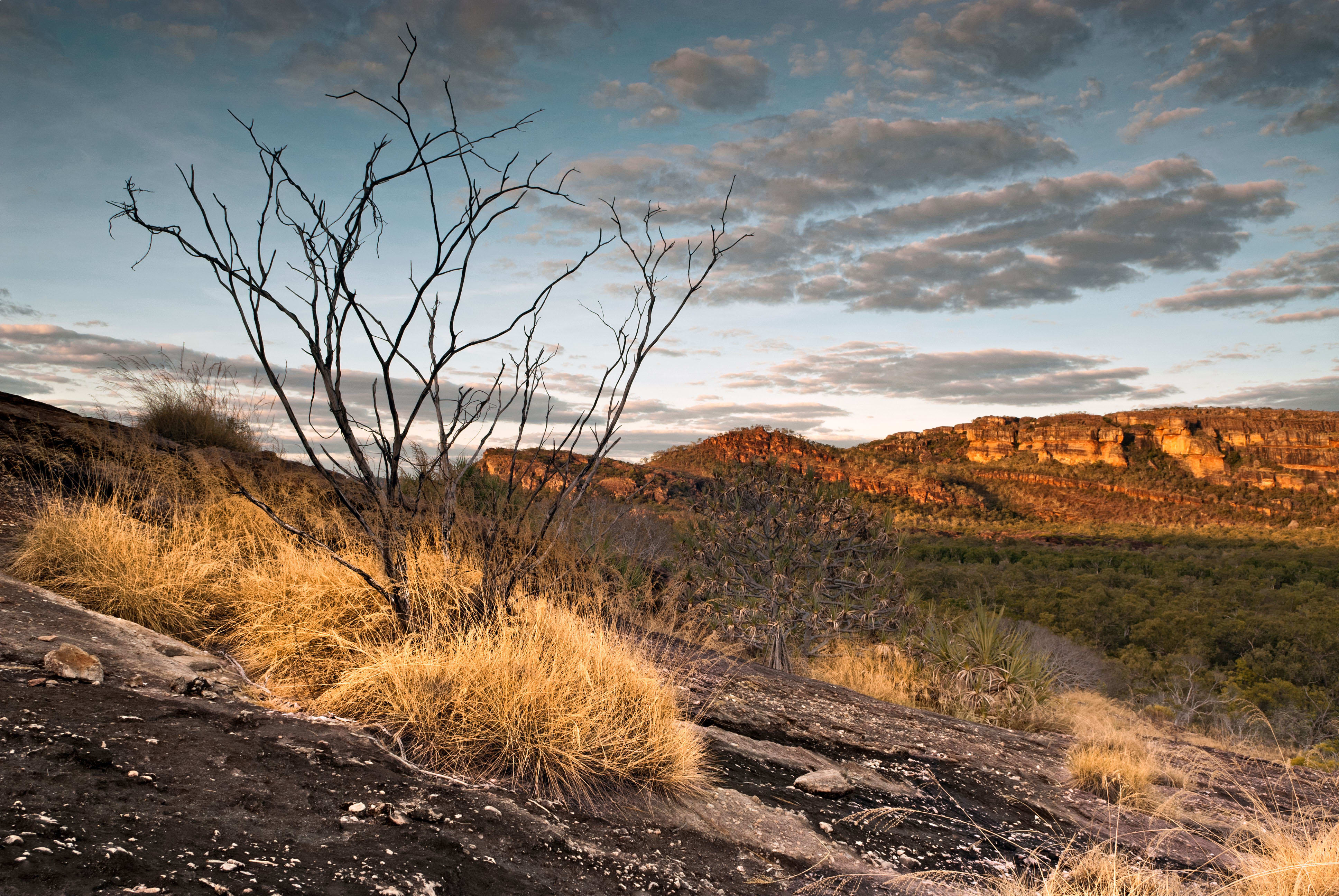
Odyssey Traveller has been serving global travellers since 1983 with educational tours of the history, culture, and architecture of our destinations designed for mature and senior travellers. We specialise in offering small group tours partnering with a local tour guide at each destination to provide a relaxed and comfortable pace and atmosphere that sets us apart from larger tour groups. Tours consist of small groups of between 6 and 12 people and are cost inclusive of all entrances, tipping and majority of meals. For more information, click here, and head to this page to make a booking.
Articles about Australia published by Odyssey Traveller:
- Uncovering the Ancient History of Aboriginal Australia
- Aboriginal Land Use in the Mallee
- Understanding Aboriginal Aquaculture
- Mallee and Mulga: Two Iconic and Typically Inland Australian Plant Communities (By Dr. Sandy Scott).
- The Australian Outback: A Definitive Guide
For all the articles Odyssey Traveller has published for mature aged and senior travellers, click through on this link.
External articles to assist you on your visit to the Kimberley:
- The 10 Most Famous Argyle Diamonds – Paul Bram
- Australia.com: Guide to the Kimberley
- 10 Must Visit Attractions in the Kimberley
- Broome’s History in a Pearl Shell
- The West Kimberley, Western Australia
- The Kimberley
- Broome, the pearl of Western Australia
- Kimberley’s hidden world of Indigenous rock art revealed by researchers
Related Tours
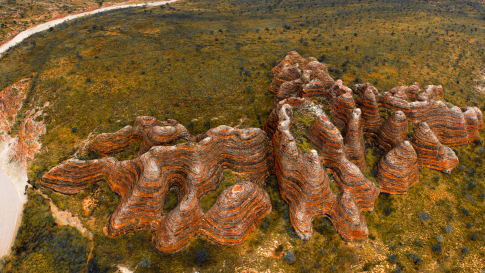
19 days
Sep, Apr, May, Jun, Jul +2Kimberley, Purnululu, Tiwi Islands and Arnhem Land
Visiting Northern Territory, Western Australia
Small group tour touring most of the Australian territory, travelling through the outback and visiting many of the famous sights as well as off the beaten track locations, giving you the opportunity the explore and meet our people in the most remote locations and far north Kakadu and the Kimberley.
From A$14,995 AUD
View Tour
14 days
Apr, Jul, SepKimberley and Pilbara explored by air
Visiting Northern Territory, Victoria
Small group air charter tour of the Kimberley and Pilbara for senior and mature couples and single travellers. Learn about Purnululu, Bradshaw art, visit Derby, Broome and Alice Springs.
From A$24,695 AUD
View Tour
13 days
May, Jun, Jul, Aug, SepSmall group tour of Australia's Kimberley
Visiting Western Australia
Escorted small group tour of the Kimberley. We explore and visit The Bungles, Bell Gorge, Mitchell plateau & Halls Creek in the dry season. Amazing landscapes intertwined with Aboriginal communities resident more than 45,000 years.
From A$15,390 AUD
View Tour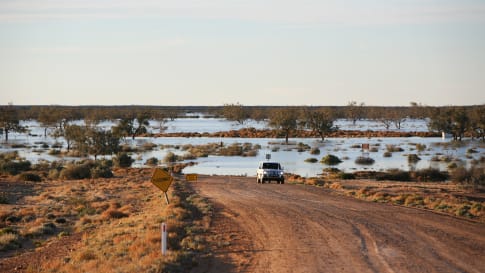
65 days
MarLong tour of Australia for a small group
Visiting New South Wales, Northern Territory
Small group tour for senior couples and solo travellers touring Australia. Travelling through the outback and visiting many of the famous sights as well as off the beaten track locations. Learn about the history of the people who explored the deserts, from indigenous communities to Europeans, as well as Burke and Wills, visit White Cliffs, Marree and far north Kakadu and the Kimberley.
From A$48,995 AUD
View TourRelated Articles

Aboriginal Rock Art in the Kimberley, Australia
The Kimberley is explored on a small group tour for mature and senior travelers, couples or singles. Both Aboriginal community is studied and an appreciation of the wet and dry seasons. This guide on the Kimberley assists the traveler as you start from Broome and travel round via Halls creek and Purnunulu national park over some 17 days in a group of up to 12 people.

Alexander Forrest & Early Development of the Kimberley Cattle Industry
Article about Alexander Forrest, a cattleman who made a difference in the Kimberley. Forms part of a small group tour for mature and senior travellers into Outback Australia for couples and solo travellers.
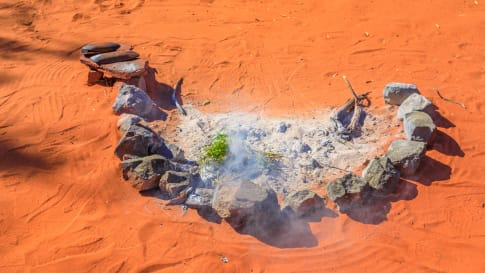
Australian Aboriginal Paths of Migration
Article for small group tours of mature or senior couples or solo travellers interested in learning more about Aboriginal history, Kinship, trading routes, songlines and ancient history.

Broome, Australia
Broome an introduction. Brome is the beginning and end of the Kimberley small group tour offered by Odyssey in the dry season. With its own history read on to learn more about this coastal frontier town. For mature and senior travellers this is a great tour examining all aspects of the Kimberley from the indigenous community, the landscapes and the wildlife. Designed for couples and the solo traveller.

Halls Creek, Western Australia
Halls Creek an important stop on our Small group tour of the Kimberley. We learn about the gold rush on this tour for mature and senior travellers, couples and singles.
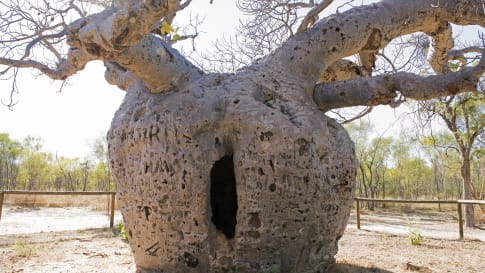
Kimberley Boab Tree
Boab trees are a wonder. Article for mature and senior travellers about this distinctive tree in Western Australia. Join a small group tour for couples and solo travellers exploring the Kimberley.

Lake Argyle, Australia
Understand why Lake Argyle exists before joining a small group package tour for mature and senior travellers of Western Australia's Kimberley region in the preferred dry season. Limited to 12 travellers for your peace of mind we learn about the landscapes and the aboriginal stories often via the rock art in far North.
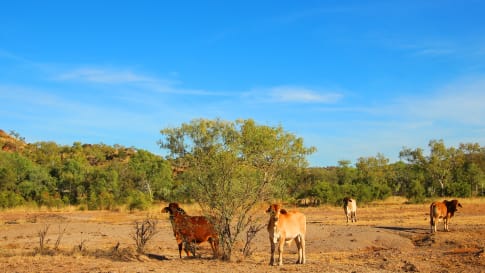
Pastoral Pioneers of the Kimberley, Western Australia
Learn about Pastoral Pioneers on a Western Australia small group tour for seniors into the outback for senior and mature couples and solo travellers.

Purnululu National Park, Australia
Read about one of the most remote World heritage sites on Earth. Odyssey takes you to visit as part of a small group package tour for mature and senior travellers in the Kimberley for couple and single travelers We travel in the dry season from Broome via Lake Argyle to this National park.



